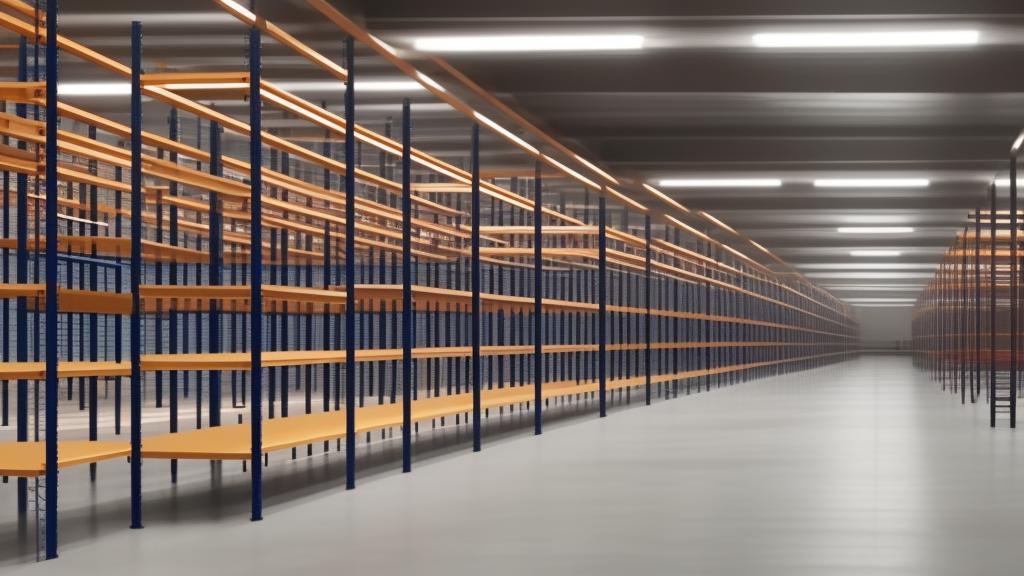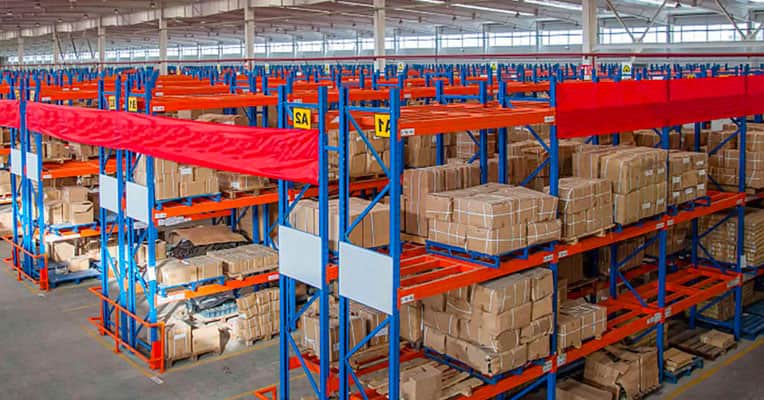Before diving into customization, it’s essential to grasp the fundamentals of pallet racking systems.
Pallet racking is a method of storing goods within a warehouse on pallets, which are large, flat storage platforms.
These pallets are typically made of wood, plastic, or metal, and they can hold various types of products.
Pallet racking systems are designed to make the best use of available vertical and horizontal space, allowing for efficient storage and retrieval.
There are several common types of pallet racking systems, including selective racking, drive-in racking, push-back racking, and pallet flow racking.
Each of these systems has its advantages and ideal use cases, making it crucial to choose the right one for your specific needs.
Customization comes into play when you want to optimize these systems for your warehouse’s unique requirements.
The Benefits of Customization
Customizing your pallet racking layout is not a one-size-fits-all solution. It’s about tailoring the design to your business’s specific demands, which can lead to several benefits:
- Maximized Space Utilization: Every inch of your warehouse’s space is valuable. Customization ensures that your pallet racking layout makes the most efficient use of the available space, allowing you to store more products and reduce wasted space.
- Improved Accessibility: A well-designed layout simplifies access to products, reducing the time and effort required for picking and restocking. This leads to increased productivity and decreased labor costs.
- Enhanced Safety: A customized layout considers safety factors such as weight capacities, proper spacing, and secure anchoring. This minimizes the risk of accidents and product damage.
- Scalability: As your business grows or changes, a customized layout can adapt to accommodate new product lines, increased storage needs, or shifting priorities.
- Optimized Workflows: Tailoring your pallet racking layout can optimize the flow of goods through your warehouse, minimizing travel distances and streamlining processes.
Assessing Your Warehouse’s Needs
To begin customizing your pallet racking layout effectively, you must first assess your warehouse’s unique requirements. Consider the following factors:
- Inventory Type: Different products have different storage needs. Assess the size, weight, and volume of your inventory, as well as any specific handling requirements.
- Order Fulfillment Process: How are orders picked, packed, and shipped in your warehouse? Understanding your workflow is crucial for designing an efficient layout.
- Space Constraints: Measure the dimensions of your warehouse and identify any structural constraints, such as columns or beams, that may impact your layout.
- Future Growth: Consider your business’s future plans. Do you expect to expand your product offerings or increase your storage needs in the near future?
- Budget: Customization comes with costs, so it’s essential to establish a budget and find the right balance between customization and affordability.
Selecting the Right Pallet Racking System
The next step in customization is selecting the appropriate pallet racking system for your needs. Each type of system offers specific advantages and limitations. Here are some common options:
- Selective Racking: This is the most common system, allowing direct access to every pallet position. It’s suitable for businesses with high stock turnover and various SKU’s.
- Drive-In Racking: Ideal for high-density storage, this system allows forklifts to drive directly into the rack to load and retrieve pallets. It’s perfect for businesses with limited SKU diversity.
- Push-Back Racking: Push-back racking is a LIFO (Last-In-First-Out) system that maximizes space utilization. It’s suitable for businesses with a small number of SKU’s and a high pallet count per SKU.
- Pallet Flow Racking: This system is suitable for FIFO (First-In-First-Out) inventory management. It uses gravity to move pallets to the front of the rack for easy picking.
- Cantilever Racking: Designed for the storage of long, oversized, or irregularly shaped items, this system is perfect for businesses dealing with items like lumber, piping, or furniture.
Layout Design and Configuration
Once you’ve chosen the right pallet racking system, it’s time to create the layout design. This involves positioning racks within your warehouse to optimize space and workflow. Here are some key considerations:
- Aisle Width: Determine the width of your aisles based on the type of forklifts you use and your storage density. Narrow aisles can maximize storage capacity, while wider aisles allow for more comfortable navigation.
- Storage Density: Consider whether you want high-density storage, where pallets are stored close together, or lower-density storage for easier access.
- Vertical Space Utilization: Don’t forget to use the vertical space in your warehouse effectively. High-rise racking systems can take advantage of ceiling height to maximize storage.
- Aisle Configuration: Choose between single-deep, double-deep, or multiple-deep aisles to accommodate your storage and retrieval requirements.
- Safety Measures: Ensure that your layout includes safety features such as guardrails, safety netting, and proper signage.
- Accessibility: Design the layout to facilitate easy access to all items, with consideration for the frequency of movement and picking processes.
Rack Accessories and Add-Ons
Customization also extends to the use of rack accessories and add-ons. These additional elements can enhance your pallet racking system’s functionality and safety. Here are some examples:
- Wire Decking: Wire mesh decking provides a sturdy surface for pallets to rest on, preventing items from falling through and improving fire safety.
- Pallet Supports: Pallet supports can help distribute the load more evenly across the racking beams, reducing the risk of deflection or damage.
- Safety Netting: Safety netting can be added to prevent items from falling off the back of the rack, protecting employees and inventory.
- Pallet Stops: Pallet stops at the end of the rack can help prevent accidental pallet push-through.
- Lighting and Cameras: Improved visibility through the installation of proper lighting and security cameras can enhance safety and security within your warehouse.
Optimizing for Safety and Compliance
Safety and compliance should always be at the forefront of your customization efforts. Consider the following to ensure a safe and compliant warehouse:
- Weight Limits: Adhere to recommended weight limits for each racking system to prevent overloading and potential collapse.
- Anchoring: Properly anchor your racks to the floor to prevent instability during forklift operations or seismic events.
- Regular Inspections: Schedule routine inspections to identify and address potential safety hazards or damaged components.
- Fire Suppression: Install fire suppression systems to protect your inventory in case of fire.
- Employee Training: Provide training for your employees on safe forklift operation and racking system use.
Contact KFurniture at +92 334 0000 075 to schedule a consultation and learn how our team can design a pallet racking layout tailored to your specific needs.
Follow us for latest news and updates from our official Facebook, Twitter, and LinkedIn pages.
#Manufacturer of #steel #racks / #racks / #Pallet racks, #Long span shelving, #Shelving, #Angle racks, #Slotted angle racks, #Ware house rack, #Pallet rack, #Ware house pallet rack, #Ware house shelving, #Steel pallet, #Metal pallet, #Cage pallets, #Fire rated door, #Emergency exit door, #Steel door, #Insulated door , #Heavy duty racks, #Heavy duty shelving, #Mobile shelving, #Industrial racks, #Industrial shelving, #Storage racks,Steel shelving, #Warehouse racking, #Warehouse shelving
Product Enquiry



